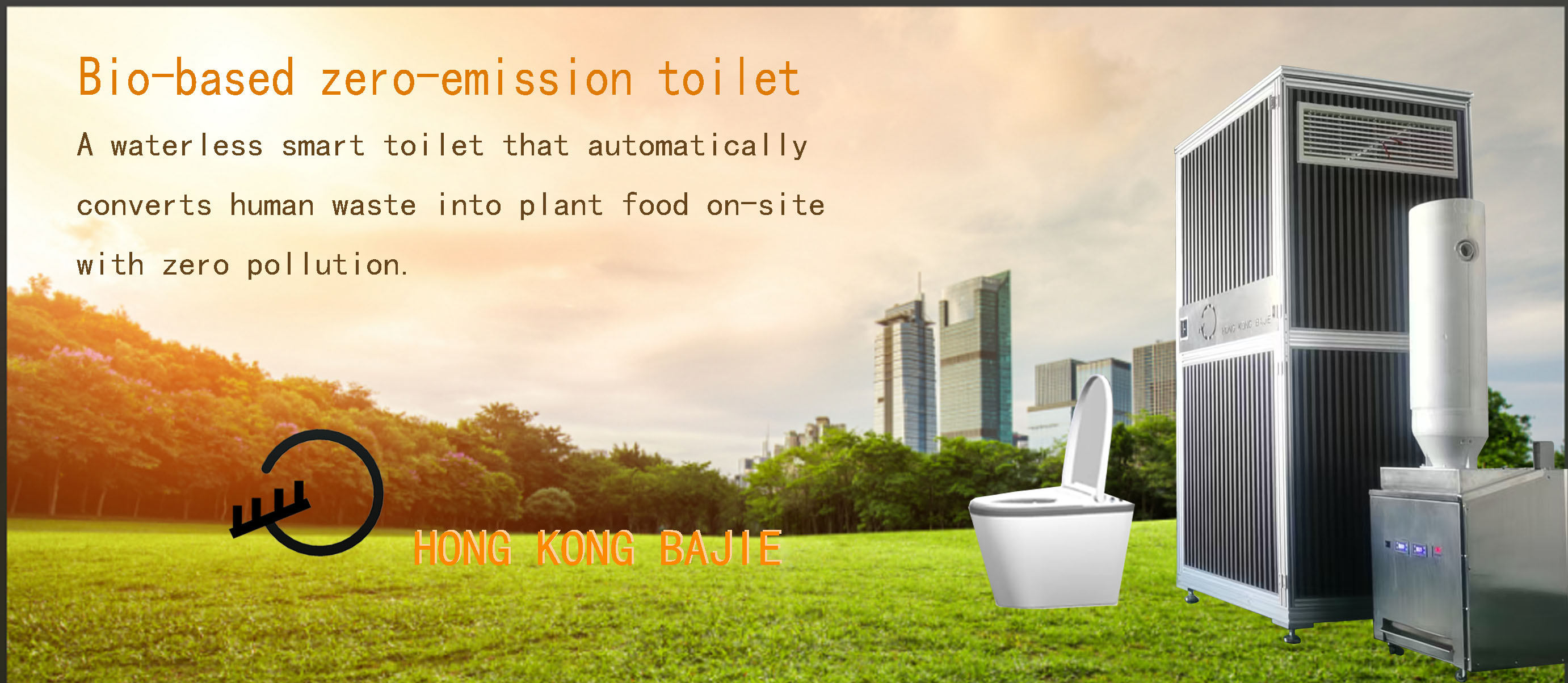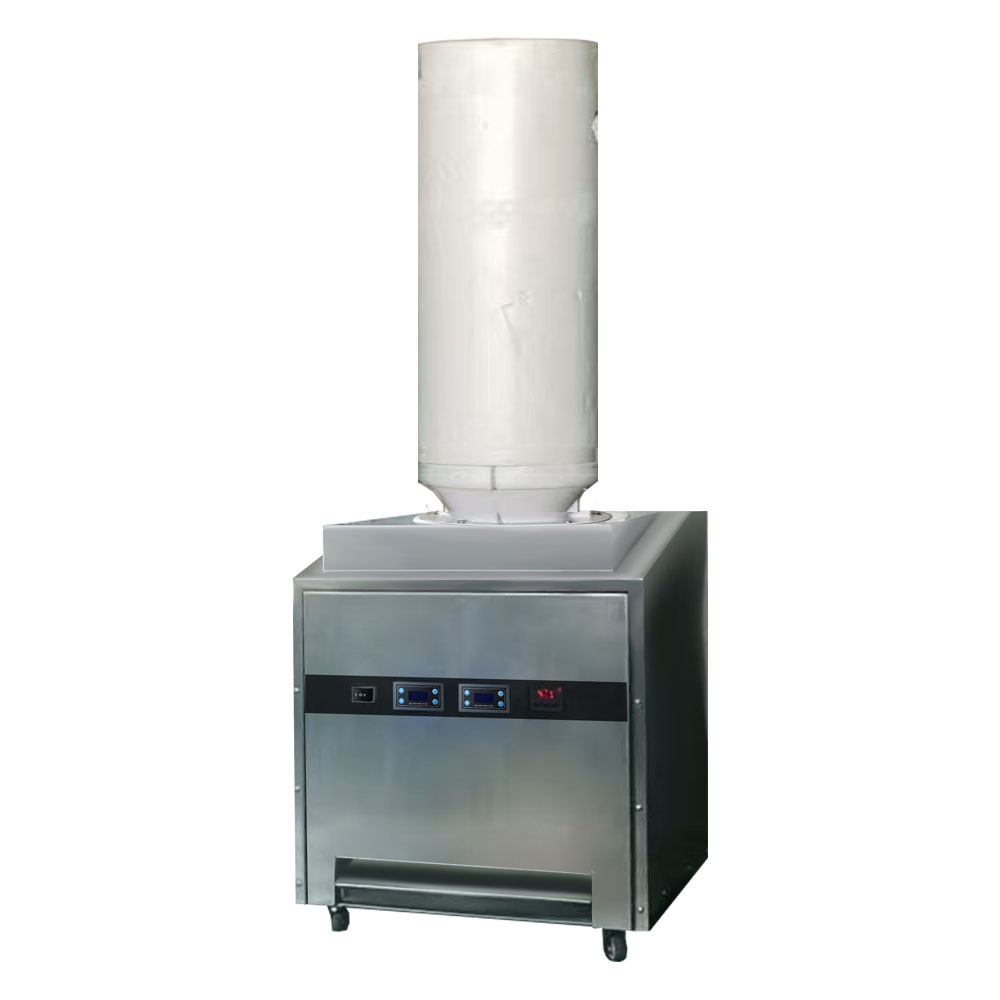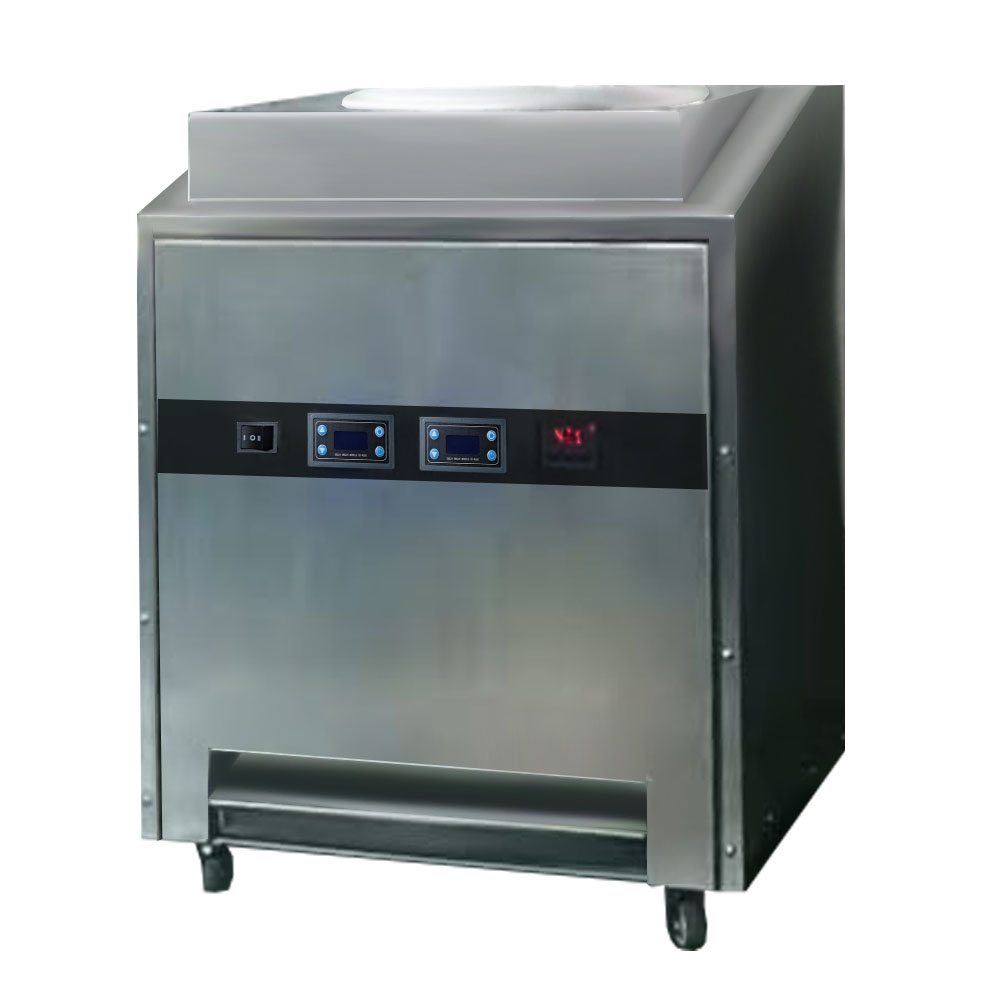
Next-generation Biological Food Waste Processor
Bio-based zero-emission toilet
This zero-emission bio-toilet system relies solely on a precisely controlled thermophilic aerobic composting process. Utilizing the potent decomposition power of thermophilic microbes within a sealed or semi-sealed reactor, it thoroughly and sanitarily transforms mixed human waste, including urine, into a single high-value resource: premium humus. It completely eliminates the water consumption and pollution issues associated with conventional toilets. This technology is the ideal choice for achieving sustainable sanitation solutions in areas lacking sewer infrastructure, facing water scarcity, or located in environmentally sensitive zones, effectively creating a self-contained, resource-recovering micro-ecosystem for human waste treatment
This zero-emission bio-toilet system relies solely on a precisely controlled thermophilic aerobic composting process. Utilizing the potent decomposition power of thermophilic microbes within a sealed or semi-sealed reactor, it thoroughly and sanitarily transforms mixed human waste, including urine, into a single high-value resource: premium humus. It completely eliminates the water consumption and pollution issues associated with conventional toilets. This technology is the ideal choice for achieving sustainable sanitation solutions in areas lacking sewer infrastructure, facing water scarcity, or located in environmentally sensitive zones, effectively creating a self-contained, resource-recovering micro-ecosystem for human waste treatment

Zero-Emission Bio-Toilet Principle Description (Thermophilic Aerobic Composting Technology)
This system utilizes exclusively thermophilic aerobic composting technology . The core principle is to leverage the powerful decomposition capabilities of thermophilic aerobic microorganisms to efficiently and harmlessly treat human waste (including urine) within an intelligently controlled reactor, achieving complete on-site resource recovery and ultimately realizing zero wastewater discharge, zero sludge generation, and zero emission of harmful gases.
The workflow is as follows:
Mixed Collection and Pre-treatment: Human waste (mixture of feces and urine) and toilet paper are collected directly into a dedicated aerobic composting reactor . A structurally loose bulking agent (e.g., sawdust, coconut coir) is typically added to improve aeration, adjust the carbon-to-nitrogen ratio and moisture content, creating an optimal environment for microbial activity.
Efficient Aerobic Microbial Degradation:
Under conditions of sufficient oxygen supply, enriched thermophilic aerobic microorganisms (including bacteria and fungi) within the reactor are activated and rapidly multiply.
These microorganisms metabolize the organic matter in the waste (including urea and organic compounds from urine) as their energy and nutrient source.
The decomposition process is exothermic , releasing significant heat that rapidly elevates the internal temperature of the reactor to 60-70°C or higher . This thermophilic phase is critical to the system.

Intelligent Environmental Control:
Aeration & Oxygen Supply: The system ensures a continuous supply of fresh air to the compost matrix through forced ventilation (fan) or passive convection design, maintaining adequate oxygen levels for the aerobic environment.
Temperature & Humidity Regulation: Sensors monitor pile temperature and moisture. The system automatically or manually adjusts aeration rates and adds water/bulking agent if necessary to keep conditions within the optimal range for thermophilic microbe activity.
Agitation/Turning (Optional): Some systems incorporate mechanical agitation or are designed for manual turning to promote uniform oxygen distribution, break up clumps, accelerate overall degradation, and prevent anaerobic pockets. Adding specific high-efficiency thermophilic aerobic microbial inoculants can expedite startup and optimize the degradation process.

Thermophilic Sanitization & Resource Recovery:
Complete Pathogen Destruction: Sustained high temperatures (>55°C for several days) efficiently destroy pathogens (bacteria, viruses), parasite eggs, and weed seeds present in feces, ensuring the biological safety of the final product.
Odor Control: Full aerobic conditions suppress the activity of anaerobic bacteria that produce malodorous compounds like hydrogen sulfide and ammonia. Volatile organic compounds are rapidly decomposed at high temperatures, effectively minimizing odors. The primary emissions are carbon dioxide (CO₂), water vapor (H₂O), and heat .
Complete Transformation: After sufficient degradation and maturation (duration depends on system design and usage frequency), the initial mixture of waste and bulking agent is fully converted into a stable, crumbly, odorless, nutrient-rich humus (high-quality organic compost) . Moisture from urine is mostly evaporated or consumed in microbial metabolism, while nutrients like nitrogen are immobilized and retained within the final humus.
Final Product: The sole end product is high-quality humus , suitable as an excellent soil conditioner or organic fertilizer. The entire process generates no wastewater or sludge requiring off-site disposal, nor does it emit harmful gases like methane.

Suitable Application Scenarios
Zero-emission bio-toilets (thermophilic aerobic composting type) are particularly well-suited for the following scenarios due to their core advantages: no connection to municipal sewer needed, no flushing water required (truly water-saving or waterless), no secondary pollution, and on-site resource recovery.
Areas without Sewer Infrastructure / Water-Scarce Regions:
Remote villages, mountainous areas, islands with underdeveloped infrastructure.
Arid and semi-arid regions with severe water scarcity.
Environmentally Sensitive / Protected Ecological Areas:
National parks, nature reserves, forest scenic spots, source water protection areas (prevents groundwater contamination).
Wetlands, river/lake shorelines, ecologically fragile zones.

Tourism & Outdoor Locations:
Scenic spots, eco-campsites, hiking trail rest points, high-altitude areas.
Resorts, eco-farms, RV parks.
Temporary & Emergency Sites:
Construction sites, temporary facilities for large events (e.g., music festivals, sports games).
Emergency shelters and relief camps during disasters like earthquakes or floods.
Sites Pursuing Sustainability:
Green buildings, eco-communities, net-zero demonstration zones.
Research bases (e.g., high-altitude, polar stations), ecological education centers.
Specific Transport & Facilities:
Boats (especially river and lake tour vessels), offshore platforms.
Highway service areas (particularly near water source protection zones).
- User name Member Level Quantity Specification Purchase Date
- Satisfaction :
-







Contact us
-
Sunefun Product Brochure.pdf5.63 M
Follow us on Tiktok
Follow us on X (twitter)
Follow us on Facebook
Chat with us on Whatsapp
Chat with us on Telegram

Product Brochure



